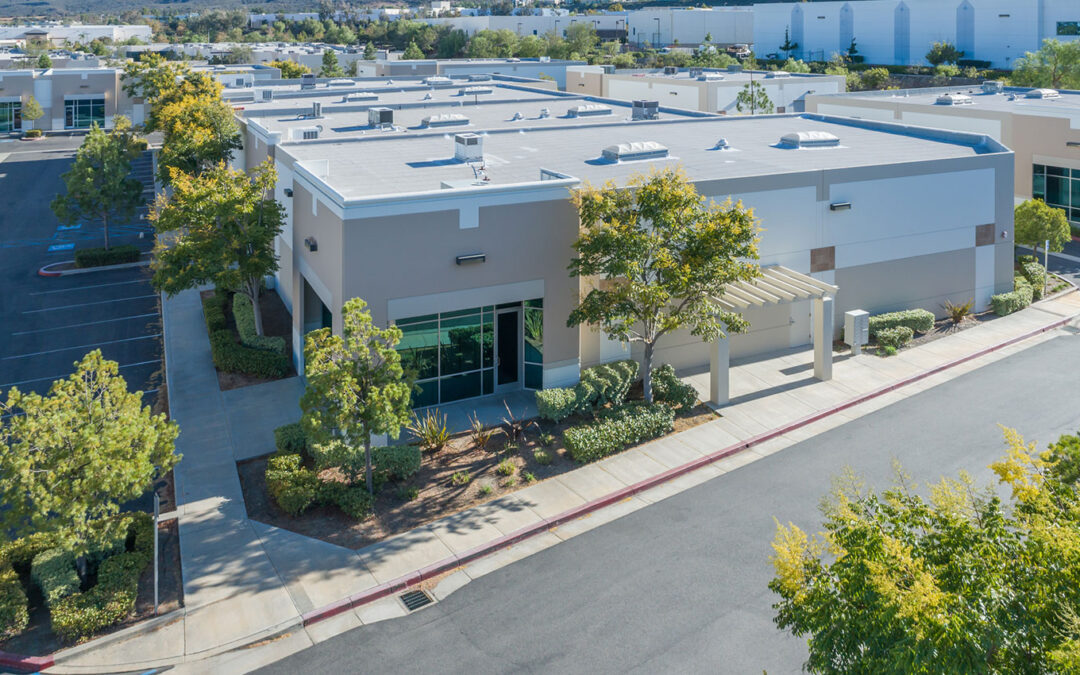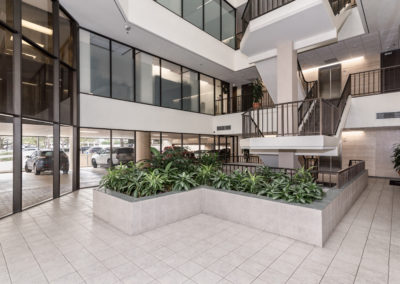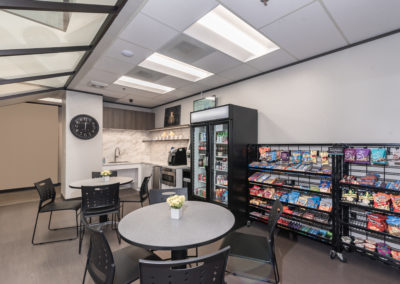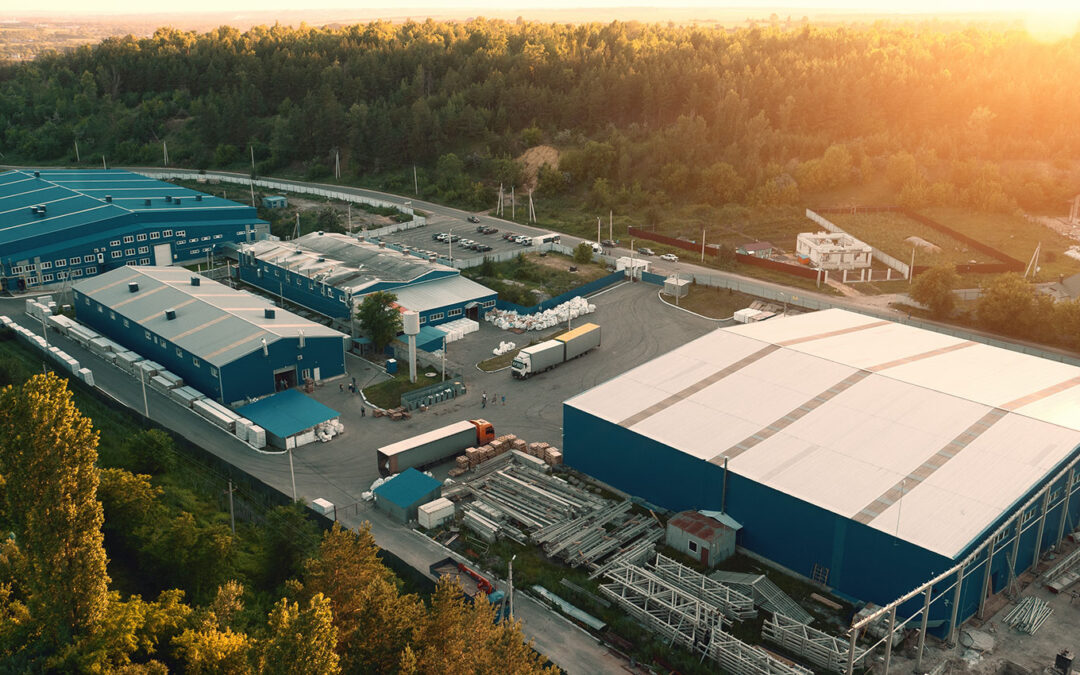In today’s evolving commercial real estate landscape, real estate investors and business owners will be presented with fresh opportunities, particularly as we approach 2024. This period will be pivotal, with technology and market changes introducing innovations like automation, e-commerce growth, and sustainable practices.
The Latest Trends
As the industrial real estate landscape continually transforms, staying ahead of the curve is vital for anyone looking to make their mark in this dynamic market. The approaching year of 2024 promises to be a time of unprecedented change and opportunity, with various trends shaping the future of industrial spaces. Understanding these trends is essential for navigating the complexities of the market, seizing opportunities, and ensuring long-term success in commercial real estate …
Automation and Robotics
Tech giants like Amazon and Alibaba are pioneering robotics in warehouses, setting a trend that’s bound to be standard by 2024. We’re looking at a future where automated systems and robotics redefine the design and function of industrial spaces.
E-Commerce
The COVID-19 pandemic has exponentially accelerated the adoption of e-commerce. The e-commerce market continues to dominate, leading to increased demand for distribution centers, fulfillment centers, and last-mile delivery hubs.
Sustainable and Smart Buildings
As sustainability becomes a higher priority for companies and consumers alike, we expect to see a rise in innovative, eco-friendly industrial buildings. These buildings will incorporate advanced technologies such as energy-efficient lighting, solar panels, and intelligent HVAC systems. LEED and other green certifications will become more commonplace, influencing investor and tenant choices.
Blockchain
Blockchain technology can transform commercial real estate by making transactions more secure, transparent, and efficient. In the coming years, blockchain may be widely used for real estate contracts, property records, and secure transactions, streamlining the buying and leasing process of industrial real estate.
Emerging Markets
As industries continue to grow in emerging markets, we can anticipate a surge in demand for industrial real estate in these regions. Countries in Asia, Africa, and South America may see significant development of warehouses, manufacturing facilities, and distribution centers.
Industrial REITs
With the growth in industrial real estate, there is likely to be an increase in the number and size of industrial Real Estate Investment Trusts (REITs), providing more opportunities for investors to get involved in the market.
Seizing Opportunities in Industrial Real Estate in 2024
Businesses today seek versatility and adaptability in their operational spaces, making multi-use commercial properties a real estate trend that is here to stay.
For you as an investor, this translates to many choices ranging from expansive warehouses to strategically placed distribution centers. Aligning your investment strategy with the growing trends of industrial flex space and sustainable development positions you at the forefront of innovation and ensures your growth is resilient and sustainable.
By placing yourself at the intersection of innovation and sustainability, your investment strategy becomes a formidable force in the industrial real estate market.
Industrial Flex Spaces
Industrial flex spaces have become the preferred investment vehicle for most investors following the trend of e-commerce supply chain growth in other industries. These spaces offer a combination of warehousing, office, and even retail space, catering to the needs of modern, dynamic businesses. This trend continues to gain substantial traction, which will continue to influence investment and development strategies for years.
Most notably, industrial flex spaces are thriving in the Texas market, especially around urban hubs like Dallas, Austin, and Houston. In the Dallas-Fort Worth area, more than 208 million square feet of industrial space has been added over the last decade, while the City of Houston added nearly 153,000 square feet of flex space in Q3 of 2021 alone. Austin is now home to Tesla’s Giga Texas facility, which has a massive 4.28 million square feet of industrial flex space.
But expansion isn’t without obstacles.
Turning Obstacles into Opportunities
Navigating the industrial real estate market, whether in the current landscape or as we approach 2024, presents unique challenges, including:
- Zoning and Regulatory Hurdles: Unless you live in Houston, where a lack of traditional zoning has cultivated unique opportunities, navigating the complex web of zoning laws and regulations can be daunting. The flexibility afforded by this system allows for a more creative and responsive development process, meeting the market’s demands with fewer bureaucratic obstacles. In the rest of Texas, regulations vary significantly from one location to another. Ensuring compliance while achieving your investment goals requires a thorough understanding of these laws and, often, the assistance of legal experts.
- Land Scarcity and High Competition: In prime industrial areas, especially those near major transportation hubs, the availability of land is dwindling. Scarcity drives up prices and increases competition among investors and businesses looking to secure prime real estate.
- Rising Construction and Maintenance Costs: The cost of building new industrial spaces or maintaining existing ones is growing. Investors must allocate sufficient funds to cover these expenses, ensuring their properties remain competitive and in good repair.
- Technological Advancements and Integration: The rapid pace of technological innovation is changing the face of industrial real estate. Investors must be ready to invest in innovative technologies that enhance the functionality and efficiency of their properties.
- Economic Uncertainties: The industrial real estate market is not immune to broader economic fluctuations. Changes in trade policies and the impacts of global events must be monitored and expertly navigated.
- Tenant-Specific Requirements: As businesses evolve, so do their real estate needs. Investors must be flexible and responsive, adapting their properties to meet the specific requirements of their tenants, ensuring long-term occupancy and profitability.
- Market Saturation in Popular Areas: In some regions, the industrial real estate market is becoming saturated, making it challenging for new entrants to find worthwhile investment opportunities. Diversifying your investment portfolio to include emerging markets may be necessary to overcome this challenge.
- Adapting to E-Commerce Growth: The e-commerce boom has significantly influenced the demand for industrial real estate, particularly distribution and fulfillment centers. Investors must adjust their investment strategies to cater to this growing sector.
Addressing challenges head-on and seeking expert advice when necessary will allow you to confidently navigate the industrial real estate market, positioning yourself for success now and in the future.
With a proactive mindset and a deep understanding of market dynamics, these challenges become exciting opportunities for savvy investors.
Setting the Stage for Future Success
As we look toward 2024, the industrial real estate market is ripe with potential, ready to be harnessed by those willing to act on upcoming trends and intelligent investments. Seize opportunities by watching the prevailing trends, embracing the versatility of industrial flex space, and committing to sustainable development.
The vibrant economy and innovative spirit of Texas’s commercial real estate scene invite investors and business owners alike to join in navigating the promising future of industrial real estate.
Embark on your journey to success by exploring the opportunities listed on Belvoir’s acquisition pages. Here, you will find a curated selection of properties that epitomize the future of industrial real estate, paving the way for your next successful investment. Join us in shaping the future and discovering the limitless possibilities that await in the dynamic world of commercial real estate.



























